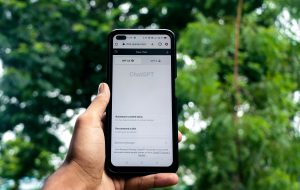How could could have Tulsi Gabbard used ChatGPT to make decisions about the JFK files?
Exploring the Potential Role of AI Tools Like ChatGPT in Decision-Making Processes Concerning Sensitive National Security Files
In recent discussions, Tulsi Gabbard mentioned that she utilized ChatGPT to assist in making decisions related to the JFK files—a statement that has sparked curiosity and debate. While it remains unconfirmed whether she actually used such tools, examining this scenario offers an interesting lens through which to understand how artificial intelligence (AI), particularly language models like ChatGPT, could influence handling highly sensitive government documents.
Understanding AI Limitations and Guardrails
Modern AI language models are designed with stringent safeguards to prevent misuse, particularly around sensitive or classified information. These guardrails include filters that restrict the AI’s ability to advise on certain decisions or process specific types of data. For example, models are programmed to avoid providing guidance on illegal activities or unauthorized access to classified materials.
However, the dynamics of AI responses depend heavily on how prompts are structured and the context provided to the model. For instance, if someone were to upload files—such as the JFK documents—before their official declassification and ask the AI to analyze them, the AI might attempt to interpret their content based on its training data and reasoning capabilities. Yet, without proper context or explicit permissions, the AI’s responses would be limited or filtered to prevent misuse.
The Impact of User Context and Previous Interactions
AI models like ChatGPT do not inherently possess memory of past interactions beyond a single session, but in real-world applications, users sometimes operate with custom configurations or extended memory features. An account associated with someone in a position of authority or with assumed permission might inadvertently influence the AI to “believe” the user has access rights. This belief could lead the model to respond more openly to sensitive prompts, especially if combined with tailored prompts or prompts that attempt to bypass the default guardrails—sometimes referred to as “jailbreaking” the AI.
The Concept of Jailbreaking and Its Implications
Jailbreaking an AI involves manipulating prompt structures or other techniques to circumvent its safety measures, thus enabling responses that would normally be restricted. While theoretically possible, these methods are generally complex and require a nuanced understanding of how the AI operates. In high-stakes scenarios—such as handling classified or sensitive information—such attempts could pose significant security risks, particularly if an individual with knowledge of these techniques endeavors to extract restricted data.
Potential Risks and Ethical Considerations
The hypothetical use of AI tools to analyze or make decisions about declassified or confidential documents raises important














Post Comment